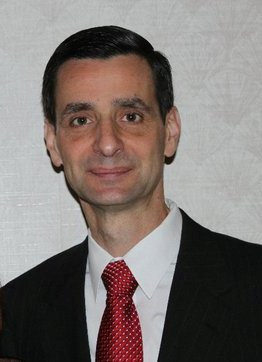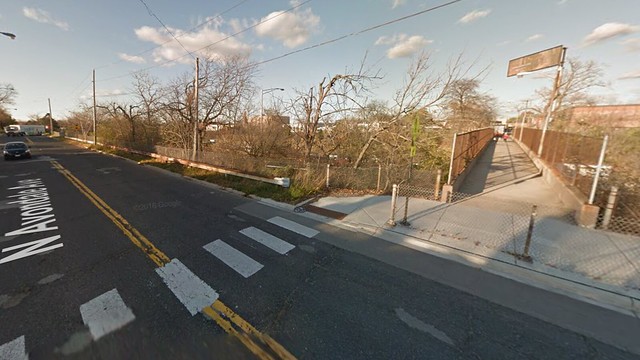After a reckless driver fatally struck Noah Katz, 2, and injured his mother in a Jefferson Park crosswalk last month, 45th Ward alderman John Arena and the city front-burnered existing plans to install curb bump-outs at the intersection. But alderman Nicholas Sposato of the 38th Ward, located just south of Arena’s district, spoke out against the project, arguing it would inconvenience motorists.
Fortunately, Sposato recently saw the light on the issue and dropped his resistance, and the proposal is moving forward. What's more, several other pedestrian safety improvements are in the works for the area, including within Sposato’s own ward.
At about 4:10 p.m. on Sunday, November 13, Noah and his mother Rachel, 39, were crossing east in the crosswalk on the south leg of the southernmost intersection of Giddings Street and Central Avenue. Van driver Alexander Vasquez, 48, was heading west on Giddings and turned south on Central, striking them. Noah was pronounced dead on the scene; Rachel was hospitalized with minor injuries. Vasquez was issued citations for failure to stop at a stop sign, failure to reduce speed, and failure to yield to a pedestrian in the crosswalk, police said.
In mid-2015, 45th Ward residents had voted to use ward money for the sidewalk extensions at the intersection, which would shorten crossing distances and help calm traffic. To install bump-outs at the crash site, first rush hour parking restrictions need to be removed on this stretch of Central. The parking restrictions are currently in place northbound from 7-9 am and southbound from 4-6 p.m., with the theory being that clearing the parking lanes facilitates traffic heading to and from the Kennedy Expressway.
The restrictions on Central also exist in Sposato’s ward, which had previously expressed resistance to lifting the rush hour parking ban, Arena’s chief of staff Owen Brugh told me last month. In late November Arena introduced an ordinance to City Council to remove the parking restrictions on Central within his ward.
Still, Sposato balked at that very reasonable compromise days later, telling DNAinfo. “For every action there’s an opposite reaction… do I want to see bumper-to-bumper [traffic] on that street?” He also complained about the $125,000 cost of the bump-outs even though Arena’s constituents had previously voted to use ward money to cover the expense.
But Arena’s ordinance passed City Council’s pedestrian and traffic safety committee yesterday, and today Brush said Sposato is even planning to submit an ordinance to remove the rush hour parking controls in his own ward in order to calm traffic. (Sposato and CDOT did not immediately respond to requests for comment.) “After having some conversations with his community and CDOT, [Sposato] has decided to change his tack,” Brugh said.
According to Brugh, the transportation department recognizes the need to calm traffic on Central, and they want to remove rush hour parking controls on the street from Higgins (a few blocks south of the Kennedy Expressway) to at least Addison. Doing so would also eliminate the de-facto additional lanes created during peak hours which encourage drivers to dangerously swerve between lanes in order to pass other vehicles.
Sposato is expected to submit an ordinance to the Council next week requesting that the parking controls be lifted in his ward, and other aldermen south of the 38th Ward may do the same, Brugh said. Once the pedestrian and traffic safety committee approves all the ordinances, CDOT plans to issue a commissioner’s authority letter, which will allow the department to immediately take down the “No Parking” signs without having to wait for full Council approval, according to Brugh.
“So we’re going to see the start of pedestrian improvements along Central, which is desperately in need of them,” Brugh said. In addition to allowing rush hour parking, CDOT plans to stripe parking lines along Central. Arena is also looking into posting “Stop for Pedestrians in Crosswalk” signs on poles next to the street, as opposed to the city’s usual in-road crosswalk warning signs, which are frequently destroyed by drivers soon after installation. “It’s frightening how quickly those things get flattened,” Brugh added.
Elsewhere in the 45th Ward, Arena has asked CDOT to do a traffic study at Higgins and Menard to determine if bump-outs would be appropriate there as well. “There’s a lot of speeding at that intersection, and not a lot of yielding to pedestrians,” Brugh noted.
The alderman also wants to improve safety for people crossing a pedestrian bridge over the Kennedy just west of Austin Avenue. The bridge runs northeast-southwest, perpendicular to the Expressway, and the southwest end of the bridge intersects mid-block with Avondale Avenue, a frontage road on the west side of the interstate.
Since there is no sidewalk on the east side of Avondale, people using the bridge have no choice but to make a mid-block crossing. But there’s a Kennedy off-ramp just northwest of the crosswalk, and drivers coming off the ramp tend to approach the crossing at near-highway speeds, Brugh said.
“A lot of people use that bridge to get to the Gladstone Park Metra station,” Brugh noted. “There’s also a public school and a parochial school nearby. So we need to do something to make it safer for commuters and kids to use that crosswalk.” CDOT engineers are looking at the possibility of installing a solar-powered pedestrian-activated crossing beacon that will flash when bridge users push the button.
These kind of beacons are only helpful if drivers follow the law by stopping for people in the crosswalk. That wasn’t the case last June when driver Hanna Burzynska, 56, fatally struck cyclist Joni Beaudry, 55, in a Mount Prospect crosswalk. Beaudry had activated the beacons by a crosswalk connecting two sections of a bike path and was legally riding across it when Burzynska disregarded the flashing lights and killed her.
Brugh said a pedestrian-activated mid-block stoplight isn’t being considered for the bridge crosswalk due to cost and time considerations. A stoplight would cost upwards of $100,000, while beacons would be in the lower five figures, Brugh said.
Moreover, a stoplight would require an extensive traffic study and an ordinance, while the beacons, which would be paid for with ward money, would simply be considered signage, so they could be approved much more quickly. “One stoplight in our ward took about three years to install,” Brugh noted.
While a stoplight would be preferable at that location, it’s good news that near-term pedestrian safety improvements are in the works for the Northwest Side. Hopefully they will prevent senseless tragedies like the crash that took Noah Katz’s life from happening in the future.
Did you appreciate this post? Support Streetsblog Chicago and donate.






